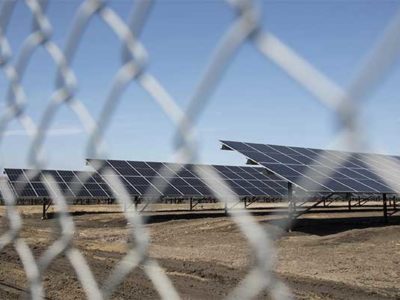- Hydro-Québec aims to install 3,000 MW of solar capacity by 2035, including both rooftop and utility-scale projects.
- The utility's change in stance is driven by a 90% drop in solar costs over the past 15 years.
- Financial incentives for residential and commercial solar installations will begin in 2026.
After years of downplaying its role, Hydro-Québec is making a decisive pivot toward solar energy.
In a strategic announcement, President and CEO Michael Sabia acknowledged that the utility had previously “underestimated” the potential of solar—but now plans to develop 3,000 megawatts (MW) of solar capacity by 2035.
Shift in Perspective
“For a long time, Hydro-Québec saw a limited, even very limited, role for solar,” Sabia admitted during a press conference. “After several months of analysis, we have essentially changed our perspective. Our conclusion is that there is very interesting potential with solar.”
This turnaround reflects not only a new internal assessment, but also broader changes in solar economics. Once considered too costly and inefficient for Quebec’s energy mix, solar is now emerging as a practical, cost-effective solution for grid diversification and energy security.
Falling Costs

Hydro-Québec is a public utility that manages the generation, transmission and distribution of electricity in the Canadian province of Quebec, as well as the export of power to portions of the Northeast United States. It was established by the Government of Quebec in 1944 from the expropriation of private firms.
A key factor driving this change is the dramatic reduction in solar production costs. According to Dave Rhéaume, Executive Vice-President of Commercial Operations at Hydro-Québec, “Over the past 15 years, we have seen reductions of 90% and over the next 10 years, we expect to see savings of around 30% to 50%.” Today, the cost of producing solar energy is estimated at $0.08 to $0.11 per kilowatt-hour, putting it well within the range of affordability.
Solar also offers greater flexibility than many traditional energy sources. Projects can be scaled to fit available land or rooftops, and installations can be completed more quickly than large-scale hydro or wind developments. These advantages are critical as Quebec braces for a surge in electricity demand driven by electrification and decarbonization goals.
Rooftop and Solar Parks
Hydro-Québec’s new strategy will involve both utility-scale solar parks and distributed rooftop installations for homes and businesses. On the day of the announcement, the utility launched an initial call for tenders for solar farms of up to 25 MW, targeting 300 MW of generation to be connected to the grid by 2029.
Looking ahead, the utility plans to offer financial incentives for rooftop solar beginning in 2026, encouraging customers to generate their own power and feed surplus electricity back into the grid—further lowering their energy bills.
Resilient Grid
This move into solar represents a major shift for Hydro-Québec, long known for its reliance on hydroelectricity. As Sabia noted, the strategy is not about replacing hydro, but complementing it.
Solar’s flexibility, speed of deployment, and cost-effectiveness make it a valuable tool in the province’s push toward a cleaner, more resilient grid.
With this pivot, Hydro-Québec is finally stepping into the solar era—bringing with it the scale, infrastructure, and ambition to make a lasting impact on Quebec’s energy future.















Comments